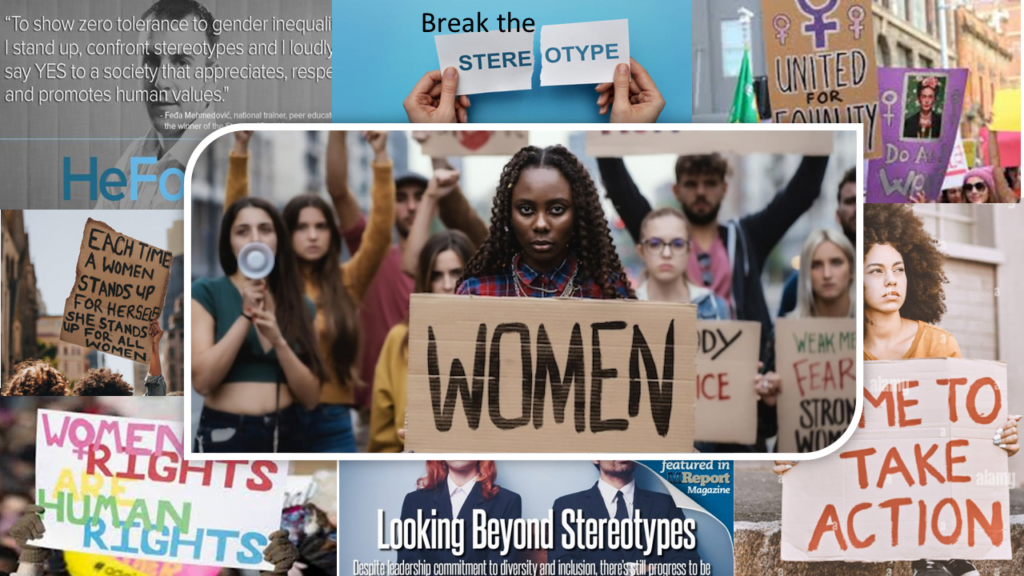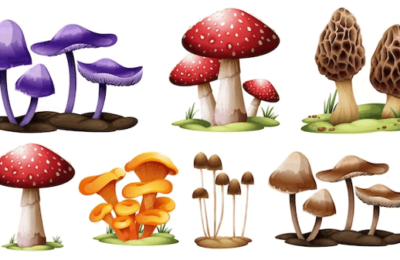Empowering Women: The ongoing series on “Empowering Women” continues with this fifth installment, featured on the website, Raise Your Dimensions (RYD).
- The first article on this topic began with an outline of a specific area we intended to explore.
- The second installment acknowledged women’s contributions across diverse fields and their impact on various aspects of society. (We have another distinct blog that focuses on the various work roles where women are making significant contributions)
- The third post illuminated women’s unique strengths and the challenges they encounter.
- The fourth installment encompassed discussion on two subjects “Underrepresentation of Women in Leadership Roles” and “Alignment of Sociocultural Norms with Women’s Empowerment” along with positive and negative sociocultural aspects, exploring the measures and barriers therein.
In this post, our focus shifts towards:
Unmasking Stereotypes and Discrimination
In the ongoing quest for women’s empowerment, one of the most formidable obstacles that women continue to face is the persistence of stereotypes and discrimination. Unmasking stereotypes and discrimination against women is a critical step. By understanding the causes, consequences, and interjectionally of these biases, we can work together to challenge stereotypes and pave the way for a society where women are recognized for their full humanity, capabilities, and contributions.
Stereotype and Discrimination: A major obstacle in Women’s Empowerment
| Profile | Stereotype barriers encompass a range of prejudiced beliefs and biases that persist in society. They often revolve around traditional gender roles, which portray women as nurturing, submissive, or solely focused on domestic roles. Stereotypes may also manifest in beliefs that women are less capable or suitable for leadership positions, certain careers, or intellectual pursuits. These biases can manifest subtly in daily interactions or more overtly in institutional settings. |
| Cause | These stereotypes have deep roots in historical and cultural norms, where gender roles are clearly defined. These roles dictated men as breadwinners and women as homemakers, setting the stage for stereotypes about women’s abilities and roles. |
| Consequences | The consequences of these stereotypes are far-reaching. Women may face discrimination in education, limiting their access to certain fields. In the workplace, these biases can lead to the gender pay gap, fewer opportunities for advancement, and a lack of representation in leadership roles. Such stereotypes can also perpetuate harmful societal norms, including domestic violence and the underreporting of gender-based violence. |
| Intersectionality | Stereotype barriers often intersect with other forms of discrimination, such as racial or age-related biases. For example, women of color might face unique challenges that compound both racial and gender-based biases, limiting their opportunities even further. The intersectionality of stereotypes adds layers of complexity to the challenges faced by women, making it crucial to address multiple dimensions of discrimination |
| Media Influence | Media plays a significant role in perpetuating these stereotypes. Advertisements, films, television shows, and social media can depict women in narrow, objectified roles, reinforcing traditional gender norms. The portrayal of women primarily as objects of desire rather than as multi-dimensional individuals can lead to real-world consequences, including sexual harassment and unequal treatment. |
| Cultural and historical context | Historical traditions and societal norms have contributed to the development and persistence of stereotype barriers. Traditional gender roles, often portrayed in art and literature as passive or purely decorative, have been ingrained in cultures for centuries. These cultural and historical contexts provide the foundation upon which stereotypes are built and perpetuated. |
| Women’s Struggle | Women have consistently fought against these stereotypes. Their struggles involve challenging societal norms, pushing for equal opportunities, and advocating for their rights. Their victories include increased representation in various fields, advancements in gender equality legislation, and the dismantling of some traditional stereotypes. Women have broken barriers in politics, business, science, and other domains, demonstrating that they are equally capable and deserving of success. |
| Global Perspective | Stereotype barriers are a global issue that manifests differently in various cultures and societies. While the specifics may vary, the core challenge of overcoming these stereotypes and achieving gender equality is a shared global endeavor. International organizations, activists, and policymakers work together to address these issues on a global scale, emphasizing the need for collective efforts to combat stereotypes and promote gender equality. |
Stereotype Challenges: A Pervasive Barrier in Women’s Empowerment

Stereotypes categories previously we discussed in our third post. In this installment, we will thoroughly examine each of these stereotypes and barriers, seeking to comprehend their Origins, Causes and Consequences, Intersectionality, Media Influence, Cultural and Historical Context, Women’s Struggles, and Global Perspective.
Objectification of Women: An Ongoing Challenge
| Profile | Objectification dehumanizes women, reducing them to mere objects of desire. |
| Causes and Consequences | Rooted in patriarchal norms, media perpetuates objectification, contributing to gender inequality. |
| Intersectionality | It compounds when intersecting with factors like race or disability. |
| Media Influence | Mass media often portrays women primarily as objects of desire |
| Historical and Cultural Context | Historical traditions have long contributed to the objectification of women. |
| Struggles & Victories | Many women have fought against objectification, achieving significant victories. |
| Global Perspective | A global challenge requiring collective efforts to combat. |
Gender Role Stereotypes: The Struggle Against Tradition
| Profile | Gender stereotypes confine individuals to predefined roles and expectations. |
| Causes and Consequences | Rooted in historical traditions, media perpetuates these stereotypes, hindering personal and professional development. |
| Intersectionality | These stereotypes intensify when intertwined with other biases. |
| Media Influence | Mass media plays a pivotal role in perpetuating gender role stereotypes. |
| Historical and Cultural Context | Deeply entrenched traditional gender roles have contributed to these stereotypes. |
| Struggles & Victories | Countless women have fought against these stereotypes, inspiring change. |
| Global Perspective | A universal problem with a global need for change |
Occupational Stereotypes: Breaking Free from Career Confines
| Profile | Occupational stereotypes often pigeonhole individuals into specific careers based on gender |
| Causes and Consequences | These stereotypes limit opportunities, creating wage disparities. |
| Intersectionality | Occupational stereotypes intersect with gender and race, impacting women of color disproportionately. |
| Media Influence | Media can perpetuate these stereotypes by portraying certain jobs as gender-specific. |
| Historical and Cultural Context | Deeply entrenched stereotypes have shaped societal expectations regarding careers. |
| Struggles & Victories | Many women have challenged these stereotypes, advocating for gender equality in the workplace. |
| Global Perspective | A global issue, as occupational stereotypes manifest differently in various cultures. |
Appearance-Based Stereotypes: Beyond Superficial Expectations
| Profile | Appearance-based stereotypes judge individuals, particularly women, based on physical attributes. |
| Causes and Consequences | Media and societal pressures often lead to negative body image and self-esteem issues. |
| Intersectionality | These stereotypes can compound when intersecting with other biases. |
| Media Influence | Mass media frequently perpetuates unrealistic beauty standards. |
| Historical and Cultural Context | Historical beauty ideals have contributed to these stereotypes. |
| Struggles & Victories | Many women have challenged appearance-based stereotypes, promoting self-acceptance. |
| Global Perspective | A universal issue as beauty standards transcend borders. |
Maternal/Paternal Bias: Equal Commitment, Equal Opportunities
| Profile | Maternal bias assumes mothers are less committed to their jobs. |
| Causes and Consequences | This bias limits career opportunities for women with children. |
| Intersectionality | Mothers of color face unique challenges due to the intersection of gender and race. |
| Media Influence | Media can perpetuate these biases by depicting mothers as less committed. |
| Historical and Cultural Context | Traditional gender roles have long influenced these biases |
| Struggles & Victories | Many women have fought against maternal bias, advocating for equal opportunities |
| Global Perspective | A global concern as maternal bias affects women worldwide. |
Double Standards: Hypocrisy Cultures
| Profile | Double standards judge women and men differently for the same behaviors. |
| Causes and Consequences | Rooted in societal norms, these standards hinder women’s autonomy. |
| Intersectionality | Double standards intensify when compounded by other biases. |
| Media Influence | Media can reinforce these standards by depicting men and women differently. |
| Historical and Cultural Context | Historical gender roles have long contributed to double standards. |
| Struggles & Victories | Many women have challenged double standards, advocating for equal treatment. |
| Global Perspective | A universal issue as double standards persist across |
Intersectional Discrimination: Amplifying Challenges
| Profile | Intersectional discrimination occurs when multiple biases intersect, intensifying challenges. |
| Causes and Consequences | Rooted in societal biases, intersectionality can lead to compounded discrimination. |
| Intersectionality | Amplifies the challenges faced by individuals who belong to multiple marginalized groups |
| Media Influence | Media can either perpetuate or challenge intersectional biases |
| Historical and Cultural Context | Deeply rooted biases and stereotypes contribute to intersectional discrimination. |
| Struggles & Victories | Many women, particularly those of color, have fought against intersectional discrimination, driving change. |
| Global Perspective | A universal concern, intersectional discrimination affects diverse populations. |
Microaggressions: The Power of Subtle Bias
| Profile | Microaggressions are subtle, everyday forms of discrimination that belittle or marginalize women. |
| Causes and Consequences | Rooted in biases, microaggressions perpetuate inequality and bias. |
| Intersectionality | Microaggressions can compound when intertwined with other biases. |
| Media Influence | Media can either challenge or normalize microaggressions. |
| Historical and Cultural Context | Historical biases have contributed to these subtle forms of discrimination. |
| Struggles & Victories | Many women have advocated against microaggressions, promoting respectful interaction |
| Global Perspective | A universal issue, microaggressions are prevalent across cultures. |
Violence and Harassment: Fear and Threats
| Profile | Violence and harassment disproportionately affect women in both public and private spaces. |
| Causes and Consequences | Rooted in power imbalances and gender stereotypes, violence and harassment perpetuate fear and inequality. |
| Intersectionality | Violence and harassment can intersect with other biases, intensifying their impact. |
| Media Influence | Media can either challenge or normalize violence and harassment. |
| Historical and Cultural Context | Historical gender norms have contributed to these issues. |
| Struggles & Victories | Many women have fought against violence and harassment, sparking movements for change. |
| Global Perspective | A global issue, violence, and harassment transcend borders. |
Institutional Discrimination: Hidden Biases
| Profile | Institutional discrimination is built into societal structures, manifesting as unequal pay, and limited access to education, and healthcare. |
| Causes and Consequences | Deeply rooted in societal structures, institutional discrimination perpetuates inequality. |
| Intersectionality | Institutional discrimination can intersect with various biases. |
| Media Influence | Media can either highlight or obscure institutional discrimination. |
| Historical and Cultural Context | Historical inequalities shape these institutional biases. |
| Struggles & Victories | Many women have challenged institutional discrimination, advocating for structural change. |
| Global Perspective | A universal problem, institutional discrimination affects societies worldwide. |
Age Discrimination: Age Shouldn’t Define Worth
| Profile | Age discrimination, especially against older women, limits opportunities. |
| Causes and Consequences | Societal ageism impacts employment and retirement. |
| Intersectionality | Age discrimination can intersect with gender and other biases. |
| Media Influence | Media often portrays older women negatively or invisibly. |
| Historical and Cultural Context | Deeply rooted ageist beliefs influence these biases. |
| Struggles & Victories | Many women have challenged age discrimination, advocating for equal opportunities. |
| Global Perspective | A global issue, as ageism affects women worldwide |
Online Abuse: Battling Digital Harassment
| Profile | Online abuse, often gender-based, subjects women to threats and hate speech. |
| Causes and Consequences | Rooted in digital anonymity and gender biases, online abuse perpetuates inequality and fear. |
| Intersectionality | Online abuse can intersect with other biases, intensifying its impact. |
| Media Influence | Media can either challenge or contribute to online abuse. |
| Historical and Cultural Context | Digital anonymity has enabled these forms of harassment. |
| Struggles & Victories | Many women have fought against online abuse, advocating for digital safety. |
| Global Perspective | A global concern, online abuse affects women across the world. |
| Global Perspective | A global concern, online abuse affects women across the world. |
Glass Ceiling: Stereotype Challenge in Women’s Empowerment
| Profile | A pervasive stereotype challenge in women’s empowerment represents an invisible but potent barrier that obstructs women’s ascent to senior leadership positions in various fields, particularly in industries traditionally dominated by men. |
| Causes and Consequences | Rooted in entrenched gender stereotypes and biases, women as less assertive or fit for leadership roles compared to men. Compounded by structural barriers within organizations that impede women’s career growth. This barrier limits women’s entry into high-level leadership positions, sustains gender pay disparities, cultivates work environments that hinder women’s progress, and ultimately contributes to the overarching problem of gender inequality by keeping women underrepresented in influential roles. |
| Intersectionality | Intersectionality amplifies the challenges posed by the glass ceiling. When it intersects with factors like race, ethnicity, or disability, it creates unique hurdles for women who face multiple forms of discrimination. |
| Media Influence | Media plays a role in both perpetuating and challenging the glass ceiling. On one hand, the media can propagate gender stereotypes that contribute to the glass ceiling. |
| Historical and Cultural Context | The glass ceiling has deep historical roots, reflecting centuries-old gender norms that have relegated women to subordinate roles. These historical and cultural contexts have contributed to the persistence of the glass ceiling. |
| Struggles & Victories | Women have long struggled against the glass ceiling. They have faced bias, discrimination, and limited opportunities for career advancement. However, many women have broken through this barrier, achieving significant victories in leadership positions, which serve as inspiring examples for future generations. |
| Global Perspective | A global phenomenon, manifesting in various ways across different cultures and societies. While the specifics may vary, the overarching challenge of women’s limited access to top leadership roles remains a common thread. A global perspective highlights the need for collective efforts to dismantle this stereotype challenge and promote gender equality in leadership positions. |
Empowering women involves challenging these stereotypes, advocating for gender equality, and dismantling the barriers that stereotypes create. It requires a concerted effort from society, policymakers, businesses, and individuals to foster an environment where women can thrive, free from the constraints of limiting beliefs. Recognizing the role of stereotypes is fundamental to achieving this goal and creating a more equitable and inclusive world for everyone.
Dear readers, our discussion on the subject “Empowering Women” persists. Let us approach this topic with an open mind, striving for progress and a brighter future where women are more empowered in shaping a valuable and flourishing society.
Disclaimer: The majority of the pictures on our platform are sourced from Google images and Pexels, and may not indicate copyright ownership. We will promptly remove the picture with sincere apologies, if any copyright claims.







